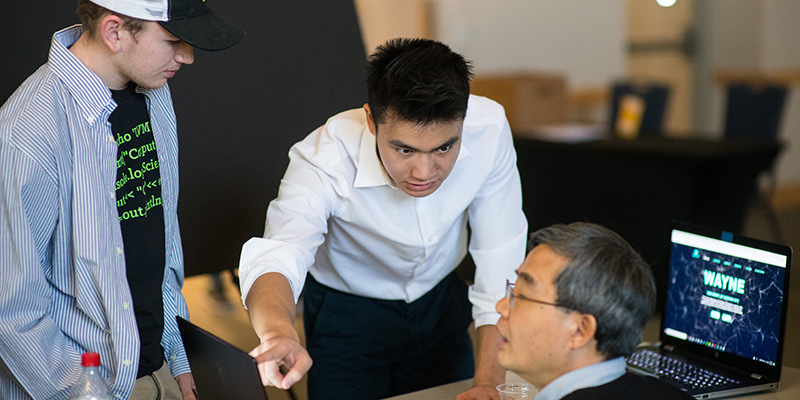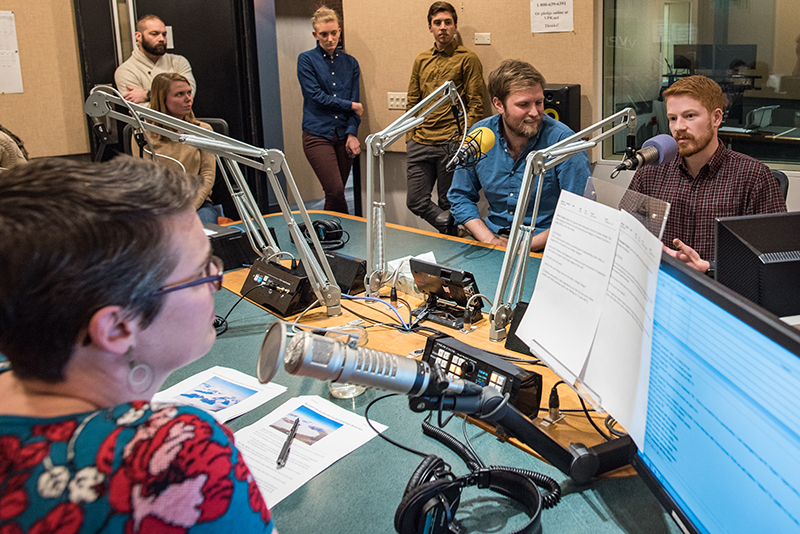Three University of Vermont faculty have been named to a list of the world’s most impactful researchers, based on the number of times their published studies have been cited by other researchers over the past decade. Researchers on the list are in the top 1 percent of all scholars whose work has been cited by others. The prestigious Highly Cited Researchers list is compiled and published annually by Clarivate Analytics.
UVM faculty named to the list are Taylor Ricketts, director of UVM’s Gund Institute for Environment and Gund Professor at the Rubenstein School of Environment and Natural Resources; Mary Cushman, professor of medicine and of pathology and laboratory medicine in UVM’s Larner College of Medicine; and Russell Tracy, professor of pathology and laboratory medicine and of biochemistry in the Larner College of Medicine.
“The University takes great pride in the recognition of these outstanding faculty members as among the most highly cited scholars in the world,” said David Rosowsky, University of Vermont provost. “UVM is recognized nationally and internationally as a leader in research, scholarship and academic programs in the environment and health. As our research activity continues to grow, and as we continue to invest not only in great teacher-scholars but also in helping them publicize and promote their work to broader audiences including the general public, we can expect additional citations and other scholarly impact recognitions. My heartiest congratulations to Drs. Ricketts, Cushman, and Tracy.”
Ricketts conducts interdisciplinary research on real-world conservation problems in Vermont and worldwide. He is a pioneering scholar in the field of Ecosystem Services, which seeks to quantify the benefits that nature provides to people through forests, wetlands, reefs and other ecosystems.
Much of Ricketts’ work explores the essential role of wild bees in pollinating global food crops, from coffee to blueberries. Ricketts recently co-led the first study to map U.S. wild bee abundances and their importance for agriculture, and he served as a review editor for the U.N.’s recent report on the global status of pollinators. He is also using big data to investigate the relationship between the environment and human health.
At the World Wildlife Fund, Ricketts co-founded the Natural Capital Project, a science-action partnership among Stanford University, the University of Minnesota, WWF and The Nature Conservancy. He has authored more than 100 scientific publications and served as lead author on a five-year, U.N.-sponsored effort to assess global ecosystems and their contributions to human wellbeing.
Both Cushman and Tracy conduct research and publish as key investigators on a number of longitudinal health studies, including the Reasons for Geographic and Racial Differences in Stroke (REGARDS), Multi-Ethnic Study of Atheroslerosis (MESA), and Cardiovascular Health Study, among others.
Cushman, who is also the medical director of the thrombosis and hemostasis program at the UVM Medical Center, is editor-in-chief of the newest journal of the International Society on Thrombosis and Haemostasis – Research and Practice in Thrombosis and Haemostasis – and is on the board of directors of UVM’s Cardiovascular Research Institute (CVRI). She was recently awarded the American Heart Association’s Population Research Prize.
Cushman is an international expert on the epidemiology of coagulation, inflammation, and other vascular-related domains in relation to etiology and pathogenesis of stroke, cognitive impairment, cardiovascular diseases and other diseases of aging. She has been a recipient of continuous National Institutes of Health funding for more than 20 years.
Tracy, who was previously recognized as one of the 400 most highly influential biomedical researchers between 1996-2011 based on data obtained from Elsevier, is the recipient of several international research awards, including the 2015 Distinguished Scientist Award from the American Heart Association/American Stroke Association
He is an expert in the field of coagulation, inflammation and adaptive immune systems in cardiovascular disease (CVD) and other chronic diseases and has made major contributions to our understanding of inflammation in atherosclerosis and as a major cause of CVD and non-CVD morbidity and mortality in “well-controlled” HIV infected individuals. He is a distinguished investigator if the CVRI, and has been consistently funded by the NIH for more than 35 years.
Cushman and Tracy lead a large research laboratory and mentor UVM graduate students in the clinical and translational science and public health programs, postdoctoral students, as well as medical students and residents and fellows in UVM Medical Center training programs.
The methodology that determines the high-impact researchers draws on the data and analysis performed by bibliometric experts from the Institute of Scientific Information at Clarivate Analytics. It uses Essential Science Indicators, a unique compilation of science performance metrics and trend data based on scholarly paper publication counts and citation data from the Web of Science, the premier web-based environment of scientific and scholarly research literature totaling over 33,000 journals.
View the Highly Cited Researchers 2018 list.
Source: UVM News




